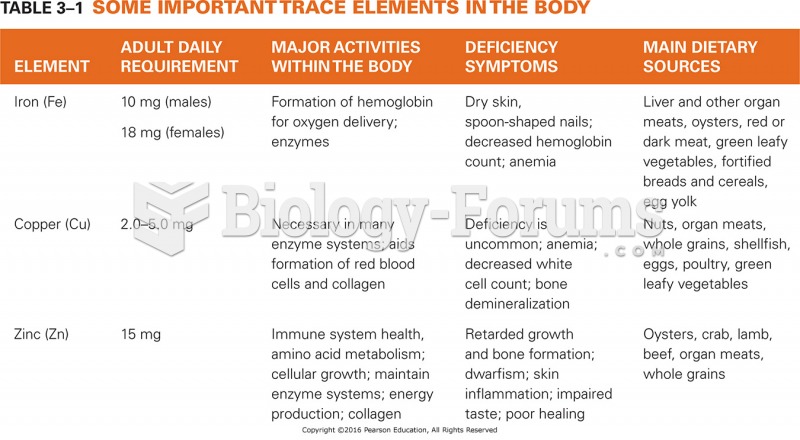Answer to Question 1
Pasteurization is a food preservation process whereby food is partially sterilized through brief exposure to a high temperature. Foods that are typically pasteurized include milk, juice, spices, ice cream, and cheese. Pasteurization is especially effective for killing some forms ofE. coli,Salmonella,Campylobacter jejuni, andListeria monocytogenes. Several outbreaks ofSalmonellapoisoni ng stemming from unpasteurized apple cider prompted new laws regarding pasteurization to be enacted. Commercially available apple cider must be either pasteurized or labeled as nonpasteurized, and the FDA recommends that homemade cider be heated for 30 minutes at 155F (68C) or 15 seconds at 180F (82C).
Answer to Question 2
Shellfish poisoning can result from the consumption of particular types of contaminated fish and shellfish (for example, clams and oysters). Certain marine animals consume large amounts of ocean algae that sometimes produce poisonous marine toxin compounds. Eating marine toxin-contaminated foods can cause tingling, burning, numbness, drowsiness, and difficulty breathing. People with shellfish poisoning may also experience a strange phenomenon called hot-cold inversion, whereby cold is perceived as hot and vice versa.One variety of shellfish poisoning is associated with a phenomenon referred to as red tide. This phenomenon occurs when a particular marine alga begins to grow quickly. As it multiplies, it produces brightly colored pigments that are released and make the surrounding water appear red or brown. During this period of rapid growth, the algae produce a potent toxin called brevetoxin, which when consumed by humans, causes shellfish poisoning. Approximately 30 cases of shellfish poisoning are reported in the United States every year, with most cases occurring in the coastal regions of the Atlantic Northeast and Pacific Northwest.







